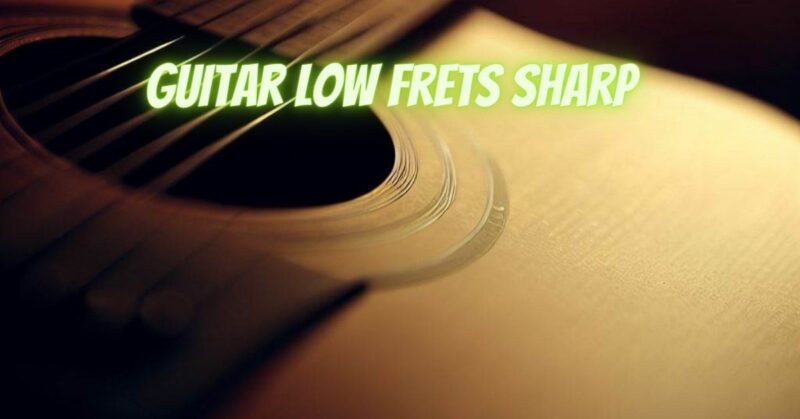Experiencing sharp notes on the lower frets of your guitar can be frustrating and make playing certain chords and melodies challenging. This issue, known as “fretting out” or “fret buzz,” occurs when the strings contact the frets too heavily, resulting in a sharp and unpleasant sound. Understanding the causes behind sharp low frets and implementing the appropriate solutions can help you achieve better playability and intonation on your guitar. In this article, we’ll explore the common reasons for sharp low frets and offer practical solutions to address the problem.
1. Neck Relief and Truss Rod:
Insufficient or excessive neck relief can cause sharp frets. Neck relief refers to the slight curvature or bow in the guitar’s neck, controlled by the truss rod. If the neck has too much relief (backbow) or too little relief (forward bow), the strings may contact the lower frets too heavily, causing sharp notes.
Solution: Adjusting the Truss Rod
Carefully adjust the truss rod to achieve the proper neck relief. If your neck has too much bow, tighten the truss rod (turning it clockwise); if there’s too little bow or the neck is backbowed, loosen the truss rod (turning it counterclockwise). Make small adjustments, allowing the neck time to settle before reevaluating the playability.
2. Fret Leveling:
Uneven or high frets can lead to sharp notes, especially on the lower frets. Fret leveling ensures a uniform fretboard surface, eliminating any high spots.
Solution: Fret Leveling and Dressing
Consult a professional guitar technician for fret leveling and dressing. They will use specialized tools to level the frets, ensuring each fret is at the correct height for optimal playability and intonation.
3. Nut Slot Height:
If the nut slots are cut too high, the strings may contact the first few frets too heavily, causing sharp notes.
Solution: Adjust Nut Slot Height
A qualified guitar technician can adjust the nut slot height, ensuring that the strings have adequate clearance at the nut. The goal is to achieve a balance between low action and proper clearance to prevent sharp fretting.
4. Action and Bridge Height:
An action that is set too low or uneven bridge height can contribute to sharp notes, especially when fretting near the nut.
Solution: Adjusting Action and Bridge Height
Raise the action slightly by adjusting the bridge height to provide more clearance between the strings and frets. Ensure that the bridge height is consistent across all strings.
5. String Gauge and Tension:
Using extremely light gauge strings or low string tension can make it easier for the strings to contact the frets and produce sharp notes.
Solution: Choose Suitable Strings
Consider using slightly higher gauge strings or increasing the overall string tension to reduce the chances of fret buzz on the lower frets.
Dealing with sharp low frets on your guitar can be a challenging issue, but with the right knowledge and solutions, you can improve the playability and intonation of your instrument. Proper adjustments to the truss rod, fret leveling, nut slot height, action, and bridge height can all contribute to eliminating fret buzz and achieving better playability. If you’re unsure about making these adjustments yourself, seek help from a qualified guitar technician who can diagnose and resolve the specific problem affecting your guitar’s playability. With attention to detail and regular maintenance, you’ll be rewarded with a guitar that plays smoothly, allowing you to focus on your music and enjoy an enhanced playing experience.


